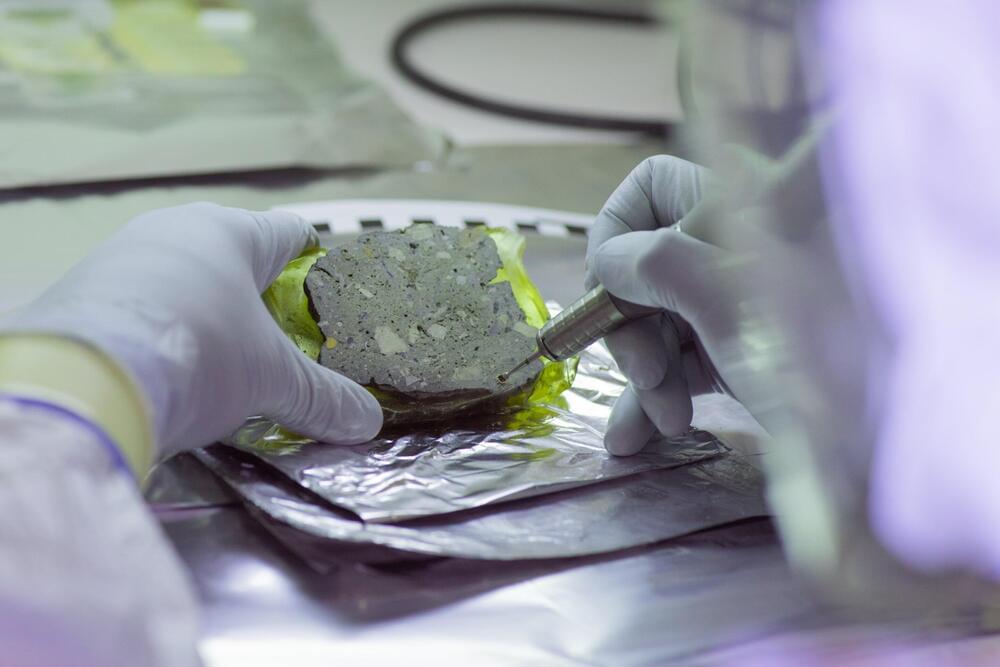Musk and SpaceX faced online backlash in China after a note sent to the UN revealed the company’s satellites almost collided with China’s space station in 2021.



Officials with the Danish energy company Ørsted have announced that they have achieved first power on the Hornsea 2 project—a new windfarm off the coast of England in the North Sea. As part of their announcement, posted on the company’s web page, officials noted that once the windfarm is fully operational, it will represent the largest windfarm in the world.
Hornsea 2, as its name implies, is the second segment of a four-segment project. Hornsea 1 became operational last year and is currently the largest offshore windfarm —with its 174 turbines, the farm has a capacity of 1.2-GW—enough to power over a million homes in the U.K.
Hornsea 2 was approved for construction back in 2016—it will feature 165 8-MW turbines made by Siemens, which will give it a capacity of 1.32 GW. The offshore substation and reactive stations have been installed and tested while construction continues on the turbines. The windfarm will be located approximately 90 kilometers off the coast of Grims, England, which is not far from Leeds and Sheffield. Once the windfarm is fully operational, it will deliver power to a substation at Killingholme. The project will involve stringing cable under 390 kilometers of ocean water and then 40 kilometers of land before reaching the substation. Hornsea 2 will also be breaking another record—it will be located farther away from shore than any other large-scale windfarm.

A team of Viennese researchers has developed what likely amounts to the future of classical computing: Intelligent transistors. By tapping into the element Germanium, these transistors are much more efficient and can reduce the number of transistors required for the same computational work by a staggering 85%.
How does our biology give rise to the experience of consciousness?
Anil’s new book “Being You” is available now: https://geni.us/anil.
Watch the Q&A: https://youtu.be/JZS39CaODTs.
Anil Seth argues, using innovative combinations of theory and experiment, that our brains are prediction machines inventing our world and correcting our mistakes by the microsecond. Anil’s new perspective on consciousness has shed light on the nature of the self, free will, the intimate relationship between being alive and being aware — and the possibility of conscious machines.
Anil Seth is Professor of Cognitive and Computational Neuroscience at the University of Sussex, where he is also Co-Director of the Sackler Centre for Consciousness Science. He is also a Wellcome Trust Engagement Fellow, Co-Director of the Canadian Institute for Advanced Research (CIFAR) Program on Brain, Mind, and Consciousness, and Co-Director of the Leverhulme Doctoral Scholarship Programme: From Sensation and Perception to Awareness.
–
A very special thank you to our Patreon supporters who help make these videos happen, especially:
Supalak Foong, efkinel lo, Abdelkhalek Ayad, Martin Paull, Ben Wynne-Simmons, Ivo Danihelka, Hamza, Paulina Barren, Kevin Winoto, Jonathan Killin, János Fekete, Mehdi Razavi, Mark Barden, Taylor Hornby, Rasiel Suarez, Stephan Giersche, William ‘Billy’ Robillard, Scott Edwardsen, Jeffrey Schweitzer, Gou Ranon, Christina Baum, Frances Dunne, jonas.app, Tim Karr, Adam Leos, Michelle J. Zamarron, Fairleigh McGill, Alan Latteri, David Crowner, Matt Townsend, Anonymous, Robert Reinecke, Paul Brown, Lasse T. Stendan, David Schick, Joe Godenzi, Dave Ostler, Osian Gwyn Williams, David Lindo, Roger Baker, Greg Nagel, and Rebecca Pan.
–
Subscribe for regular science videos: http://bit.ly/RiSubscRibe.
The Ri is on Patreon: https://www.patreon.com/TheRoyalInstitution.
and Twitter: http://twitter.com/ri_science.
and Facebook: http://www.facebook.com/royalinstitution.
and Tumblr: http://ri-science.tumblr.com/
Our editorial policy: http://www.rigb.org/home/editorial-policy.
Subscribe for the latest science videos: http://bit.ly/RiNewsletter.
Product links on this page may be affiliate links which means it won’t cost you any extra but we may earn a small commission if you decide to purchase through the link.

Up to 90% of patients who undergo open abdominal or pelvic surgery develop postoperative adhesions, or scar tissue. Minimally invasive laparoscopic surgical approaches can reduce the severity of the adhesions, but the scar tissue still forms. The cellular response to injury—even intentional injury, such as surgery to repair a problem—results in a cascade of molecules pouring to the site to heal the tissue. But the molecules, working quickly to close the wound, often go too far and bind the wound to nearby healthy tissue. Depending on the location, the resulting scar tissue can cause chronic pain, bowel obstruction and even death.
There may be a potential solution available soon, according to researchers from Southern Medical University in China. They have developed an injectable hydrogel that can plug up wounds without sticking to off target tissue, effectively preventing postoperative adhesions.
Their approach, tested in rats and rabbits, was published on Nov. 18 in Advanced Functional Materials.



😃
Probabilistic modelling
Four major steps are entailed in generating successful probabilistic modelling through the Bean Machine. The modelling is based on generative techniques, the data collected from Python dictionaries where it is associated with random variables. The learning step improves the model’s knowledge based on observations, and the results are stored for further analysis.
Through probabilistic modelling, engineers and data scientists can account for random events in future predictions while measuring different uncertainties. This method is preferred because it offers uncertainty estimation, expressivity, and interpretability facilities. Let’s discuss these.

All we can say about most of the 4,000+ known exoplanets is that they exist. Their physical characteristics are unknowable with current technology, but a few have given up some secrets. Astronomers using the Hubble Space Telescope have identified a magnetic field around the exoplanet HAT-P-11b. Earth’s magnetic field is essential for our continued existence, and this is the first time we’ve confirmed one around an exoplanet.
Earth and several other objects in our solar system have magnetic fields, a consequence of the way planets and moons interact with the solar wind. On Earth, the magnetosphere deflects damaging radiation, which would otherwise render the surface inhospitable. Fields surrounding exoplanets could serve a similar purpose. There was every reason to think exoplanets could have magnetic fields like the ones we see locally, but this is the first time we’ve been able to confirm that.
Astronomers from the University of Arizona observed the exoplanet HAT-P-11 b across six transits — that’s when the exoplanet passes in front of its host star from our perspective. This is how the HATNet Project discovered HAT-P-11 b in 2009. It was confirmed and further characterized later using radial velocity measurements from the Keck Observatory, which is the other standard method for detecting distant planets. Although, HAT-P-11 b is relatively close in the grand scheme at just 123 light years away.

Sediments in which archaeological finds are embedded have long been regarded by most archaeologists as unimportant by-products of excavations. However, in recent years it has been shown that sediments can contain ancient biomolecules, including DNA. “The retrieval of ancient human and faunal DNA from sediments offers exciting new opportunities to investigate the geographical and temporal distribution of ancient humans and other organisms at sites where their skeletal remains are rare or absent,” says Matthias Meyer, senior author of the study and researcher at the Max Planck Institute for Evolutionary Anthropology in Leipzig.
To investigate the origin of DNA in the sediment, Max Planck researchers teamed up with an international group of geoarchaeologists—archaeologists who apply geological techniques to reconstruct the formation of sediment and sites—to study DNA preservation in sediment at a microscopic scale. They used undisturbed blocks of sediment that had been previously removed from archaeological sites and soaked in synthetic plastic-like (polyester) resin. The hardened blocks were taken to the laboratory and sliced in sections for microscopic imaging and genetic analysis.
The researchers successfully extracted DNA from a collection of blocks of sediment prepared as long as 40 years ago, from sites in Africa, Asia, Europe and North America. “The fact that these blocks are an excellent source of ancient DNA—including that originating from hominins—despite often decades of storage in plastic, provides access to a vast untapped repository of genetic information. The study opens up a new era of ancient DNA studies that will revisit samples stored in labs, allowing for analysis of sites that have long since been back-filled, which is especially important given travel restriction and site inaccessibility in a pandemic world,” says Mike Morley from Flinders University in Australia who led some of the geoarchaeological analyses.